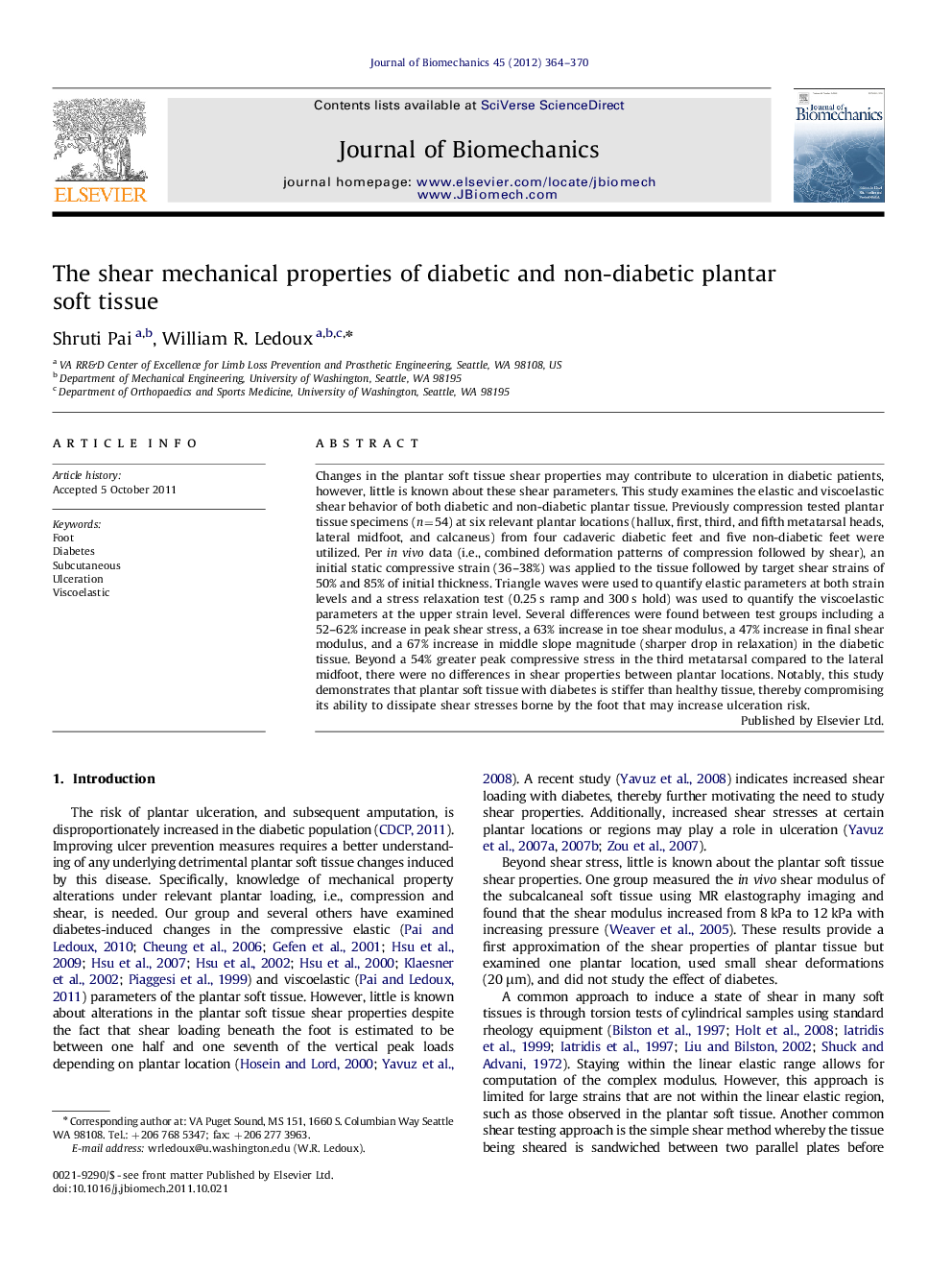| Article ID | Journal | Published Year | Pages | File Type |
|---|---|---|---|---|
| 10432730 | Journal of Biomechanics | 2012 | 7 Pages |
Abstract
Changes in the plantar soft tissue shear properties may contribute to ulceration in diabetic patients, however, little is known about these shear parameters. This study examines the elastic and viscoelastic shear behavior of both diabetic and non-diabetic plantar tissue. Previously compression tested plantar tissue specimens (n=54) at six relevant plantar locations (hallux, first, third, and fifth metatarsal heads, lateral midfoot, and calcaneus) from four cadaveric diabetic feet and five non-diabetic feet were utilized. Per in vivo data (i.e., combined deformation patterns of compression followed by shear), an initial static compressive strain (36-38%) was applied to the tissue followed by target shear strains of 50% and 85% of initial thickness. Triangle waves were used to quantify elastic parameters at both strain levels and a stress relaxation test (0.25Â s ramp and 300Â s hold) was used to quantify the viscoelastic parameters at the upper strain level. Several differences were found between test groups including a 52-62% increase in peak shear stress, a 63% increase in toe shear modulus, a 47% increase in final shear modulus, and a 67% increase in middle slope magnitude (sharper drop in relaxation) in the diabetic tissue. Beyond a 54% greater peak compressive stress in the third metatarsal compared to the lateral midfoot, there were no differences in shear properties between plantar locations. Notably, this study demonstrates that plantar soft tissue with diabetes is stiffer than healthy tissue, thereby compromising its ability to dissipate shear stresses borne by the foot that may increase ulceration risk.
Related Topics
Physical Sciences and Engineering
Engineering
Biomedical Engineering
Authors
Shruti Pai, William R. Ledoux,
